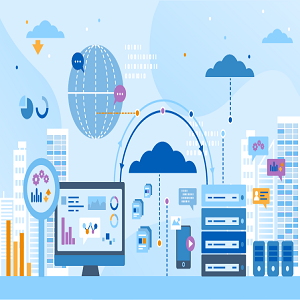Seven Ways Higher Education Institutions Use Big Data Analytics
 Higher education institutions are crunched to collect data from students, and various other groups such as alumni, companies or foundations. Data comes in all shapes and sizes. The article is about how many traditional universities across the world, with increased use of technology and strict deadlines for grades, have put up a number of intelligent points which will not leave any startup uncaught by these already formidable systems.
Higher education institutions are crunched to collect data from students, and various other groups such as alumni, companies or foundations. Data comes in all shapes and sizes. The article is about how many traditional universities across the world, with increased use of technology and strict deadlines for grades, have put up a number of intelligent points which will not leave any startup uncaught by these already formidable systems.
Higher education institutions have faced challenges with meeting their stakeholders’ needs for data, but now with emerging technologies, they can use big data to attain a competitive advantage. By leveraging Big Data and other analytics tools, universities can attract better students, manage student retention rates, serve pipeline partners more effectively and meet compliance requirements. Universities are changing the way they deliver educational content in order to create innovative academic programs that set them apart.
Leveraging Big Data analytics to track & predict student behavior
As the world becomes more digitized, the volume of data generated each day grows exponentially. This Big Data has the potential to provide insights that can help solve some of the world’s most pressing problems. Higher education institutions are using Big Data analytics to track and predict student behavior, identify at-risk students, improve retention rates, and personalize the learning experience.
In addition, Big Data is being used to research and develop new cures for diseases, assess the efficacy of treatments, and support precision medicine. Researchers are also using it to study social media trends in order to better understand how information spreads online. As the volume of data continues to grow, so too will the number of ways in which it can be used to improve our lives.
Advantages of Big Data Analytics
There are many advantages to using big data analytics in higher education institutions. Perhaps the most obvious benefit is the ability to make better-informed decisions. With access to more data, decision-makers can identify trends and patterns that they may not have been able to see before. This can lead to improved academic programs, better use of resources, and Improved student outcomes.
In addition, big data analytics can help improve institutional efficiency and effectiveness. For example, by analyzing student data, educators can identify which students are at risk of dropping out or not achieving their academic goals. This information can then be used to provide targeted support to those students, helping them stay on track and succeed.
Big data analytics can also be used to improve fundraising efforts. By analyzing donor data, institutions can identify potential major donors and target their fundraising efforts accordingly. This can lead to increased donations and overall funding for the institution.
Applications of Big Data Analytics in Higher Education
Data analytics is used in a number of ways by higher education institutions. Here are some applications of big data analytics in higher education:
To improve student outcomes: Data analytics can be used to identify at-risk students and to target interventions so that these students are more likely to succeed. For example, the University of Central Florida has used data analytics to improve student retention and graduation rates.
To inform decisions about course offerings and curriculum: Data analytics can be used to identify which courses are most popular with students, which courses lead to the best outcomes, and which courses are most in demand by employers. This information can then be used to make decisions about which courses to offer and how to design the curriculum.
To manage facilities and resources: Data analytics can be used to optimize the use of facilities and resources on campus. For example, Georgia State University uses data analytics to track energy usage so that they can make changes to reduce consumption and save money.
To improve marketing and recruiting efforts: Data analytics can be used to identify the characteristics of students who are most likely to succeed at the institution and then target marketing and recruiting efforts towards these students. For example, Vanderbilt University uses data analytics in their admissions process so that they can identify students who will thrive academically and socially in their environment.
In a nutshell
Finally, big data analytics can help institutions understand their students better. By collecting and analyzing student data, institutions can gain insights into student preferences, needs, and behaviors. This information can then be used to improve the student experience at the institution and make sure that students are getting the most out of their education.
Big data analytics has become an integral part of higher education institutions in recent years. By harnessing the power of big data, these institutions are able to improve their decision-making processes, resulting in better outcomes for students and faculty alike. We hope that this article has given you a better understanding of how big data analytics is being used in higher education and why it is such an important tool.

